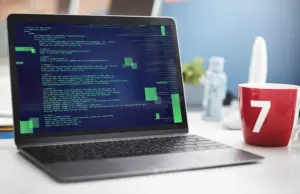So you started learning Python some months back. And now, you are confident about your Python skills. You understand how to define functions, create classes, play around with control flow and conditional statements. Yes, you feel you are ready to get into the labor market and prove yourself. You want to start making the 50, 60, $70k annual salary that an average Python programmer makes. The question now is, how do you transition from being a confident Python programmer to landing your first job.
In this article, you will discover some actionable steps you can take that will get you your first job as a Python programmer.
Let’s get into it.
- Build connections on LinkedIn
LinkedIn is a goldmine that many people ignore. I personally know several of my friends that got their first job off LinkedIn. How did they do it, you may ask? They began by building quality connections. Your network is your net worth, they say. And LinkedIn is one platform that gives you the opportunity of connecting with CEOs, CTOs, HRs of companies on a platter of gold. Well, wait a minute. Do not go out there and start to send tonnes of CEOs’ connections requests. You may not get accepted if your profile is not impressive. So just before you begin sending those requests, ensure that your profile is optimized. Here are some tips for LinkedIn profile optimization.
- Have a clear close-shot picture as your display picture
- Update your educational experience and whatever job experience you may have
- Take LinkedIn Skill Assessment Tests, especially in Python and other tech skills. When you pass the test, you get a LinkedIn Skill Assessment badge, which adds credibility to the skills on your profile
- Add certifications you have. If you do not have one, consider enrolling in an online Python certification course.
- Request recommendations from mentors and higher colleagues
- Be active on the platform. Post on relevant topics. Like and share others’ posts. Also, add meaningful comments where necessary.
If you follow these 6 steps, you can be assured that many of your connection requests will be accepted.
- Send cold messages and emails.
Now, you have some impressive individuals connected with you. What next? Drop them a message. You can begin with a message of gratitude. Something like this would pass. Hi {insert first name}, thanks for accepting my connection request. “I’m super excited to be connected with you and grateful for the kind gesture.” Sending this immediately after your connection has been approved is a good way to engage with the individual.
Whether or not the person replies, you can send a cold message to market yourself. Succinctly state who you are, what you are looking for, why you should be considered. Then, if you want to take it further, you can give them a harmless offer. Something like work with them for free for 2 weeks, if they do not like to work after 2 weeks, you go. But if they like your work, you get employed. Do this when you are confident about your skills and the value you are bringing to the table.
To be more formal, you could send such offers as emails rather than LinkedIn messages. First, get a list of prospective employers and compile their names on a spreadsheet. Then, send cold emails to them with an irresistible offer. If you send to 10, at the very least, you should get a response from one.
- Have a good portfolio
Your portfolio plays a huge role in any recruitment process. It is a catalog of past real-life projects you have undertaken. Portfolios prove to your employer that you truly have the requisite skill to fit into their organization and hit the ground running. If you do not have solid projects in your portfolio, well, get started. There are numerous Python projects you can do, depending on the difficulty level. You can, for instance, build a website blocker, a Tetris game, a GUI application, and many more.
Beyond building your portfolio, working on projects is perhaps the best way to learn. You face challenges, learn new concepts and apply them on the spot. In addition, projects allow you to apply tools when solving projects and not just blatantly cramming theoretical concepts.
- Keep on learning
This is a follow-up to the last point. As a Python programmer, you must come to terms with the fact that the methodologies and tools are ever-changing. There will always be emerging ways of doing things. To stay relevant thus, you must subscribe to long-life learning. For example, it would be weird for a Python programmer to use still formatted strings rather than f-strings. Using f-strings is faster and allows you to write cleaner codes. It is a feature that was introduced in Python 3. Folks who learned with Python 2 would need to get used to this new feature in Python 3.
The bottom line never stops learning.
- Be active in a community.
What makes Python a really fun programming language is the vibrant community it has. As a fresher, do not have to be shy to get involved in the activities of a community. It could be a conference, a webinar, or a hackathon. Be a part of it. Doing this allows you to connect with fellow Pythonistas whom you could learn from. It also broadens your network. Do not forget; your network is your net worth.
You could also be active in an online community. Answer questions that you can on StackOverflow, jump on conversions on Twitter, engage Python posts on social media, be active on Facebook groups, etc. If you can, write informative articles or tutorials and post online. That article may be what someone needs to surpass a challenge in future days.
- Contribute to open source
Again, this is a follow-up to being active in a community. The many open-source tools we use are maintained by fellow Python programmers. They are not being paid but see it as a way of giving back to a community that was once of help while they were growing. So, even if you are not an expert, lookout bugs you can fix in open source projects and fix them. You’d be surprised how the maintainers will accept your Git commit.
Many recruiters look out for this in their candidates but only find a handful. Contributing to open source is an easy way of impressing your hiring manager and standing out of the pack.
- Send quality applications
This may sound like a no-brainer, but it must be on the list. Send out applications – quality applications Do not hide in your shell. Go on platforms such as Indeed, Remoteok, Angel list, etc, and search for jobs where you meet their basic requirement. Send strong cover letters alongside your resume. Apply to as many companies as possible but ensure they are quality and personalized proposals. The last thing you want to do is to copy the same cover letter for all your applications. Take out time to tweak your cover letter based on their requirements.
In summary, these are 7 irrefutable actions that will land you your first job as a Python fresher. Follow them religiously, and while you await your appointment letter, keep on learning. You can always check out a reputable online Python course to stay updated with emerging tools in the field.



























